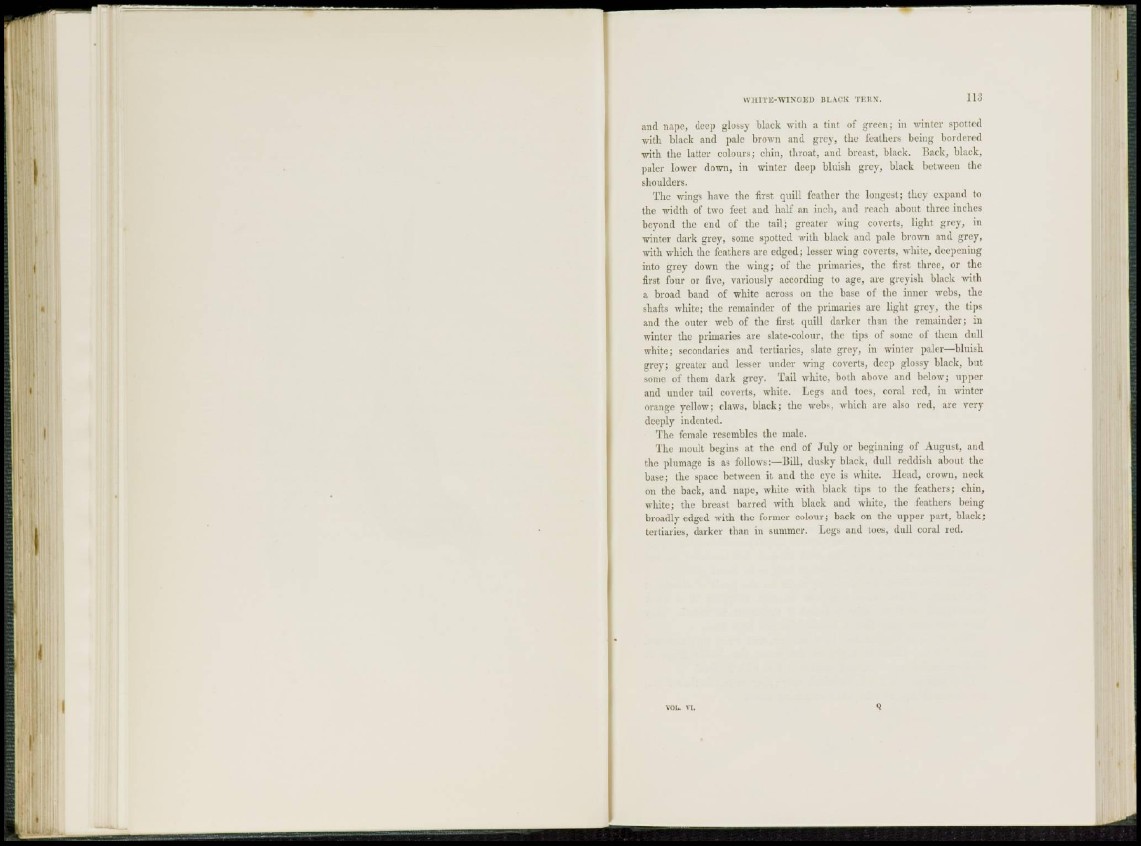
WHITE-WINGED BLACK TERN. LIS
and nape, deep glossy black with a tint of green; in winter spotted
with black and pale brown and grey, the leathers being bordered
with the latter colours; chin, throat, and breast, black. Back, black,
paler lower down, in winter deep bluish grey, black between the
shoulders.
The wings have the first quill leather the longest; they expand to
the width of two feet and half an inch, and reach about three inches
beyond the end of the tail; greater wing coverts, light grey, in
winter dark grey, some spotted with black and pale brown and grey,
with which the feathers arc edged; lesser wing coverts, white, deepening
into grey down the wing; of the primaries, the first three, or the
first four or five, variously according to age, are greyish black with
a broad band of white across on the base of the inner webs, the
shafts white; the remainder of the primaries arc light grey, the tips
and the outer web of the first (pull darker than the remainder; in
winter the primaries are slate-colour, the tips of some of them dull
white; secondaries and tertiarics, slate grey, in winter paler—bluish
grey; greater and lesser under wing coverts, deep glossy black, but
some of them dark grey. Tail white, both above and below; upper
and under tail coverts, white. Legs and toes, coral red, in winter
orange yellow; claws, black; the webs, which are also red, arc very
deeply indented.
The female resembles the male.
The moult begins at the end of July or beginning of August, and
the plumage is as follows:—Bill, dusky black, dull reddish about the
base; the space between it and the eye is white. Head, crown, neck
on the back, and nape, white with black tips to the feathers; chin,
white; the breast barred with black and white, the feathers being
broadly edged with tire former colour; back on the upper part, black;
tertiarics, darker than in summer. Legs and toes, dull coral red.
VOL. VI.